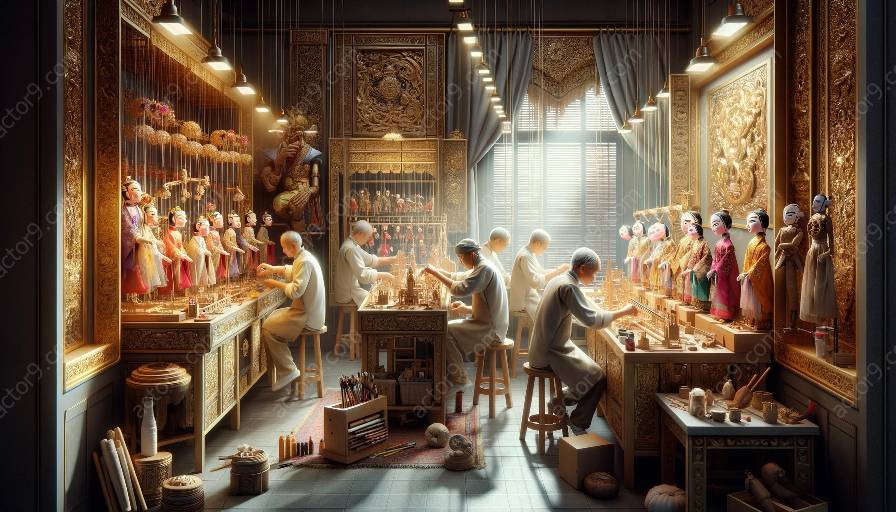Puppetry is an ancient art form that has been used for centuries to captivate and engage audiences. In recent years, puppetry has found a new and innovative application in educational settings. The construction of puppets plays a crucial role in this application, as it allows educators to create meaningful and immersive learning experiences for students.
Understanding the techniques and considerations involved in puppet construction can provide valuable insights into how to leverage the power of puppets in educational settings. This topic cluster aims to explore the art of puppet construction in educational settings, focusing on the techniques, benefits, and applications of puppetry in education.
Introduction to Puppet Construction
Puppet construction involves the design and creation of puppets. It encompasses a wide range of techniques and materials, from traditional hand-sewn puppets to more modern foam and fabric puppets. The process of puppet construction requires careful consideration of the puppet's appearance, functionality, and intended use.
When applied to educational settings, puppet construction takes on a new level of significance. Educators and puppeteers work together to create puppets that can effectively convey educational concepts, stories, and characters. This collaborative effort infuses the construction process with creativity, purpose, and learning objectives.
Puppet Construction Techniques
There are several techniques involved in puppet construction, each with its own unique considerations and applications. Hand-sewn puppets, for example, are meticulously crafted using fabric, stuffing, and sewing techniques. These puppets are often used for storytelling and role-playing activities in educational settings, allowing students to interact with characters in a tangible and engaging way.
Another common technique is foam and fabric puppet construction, which involves creating puppets with foam bases and fabric coverings. This approach allows for greater flexibility in puppet design and can accommodate more intricate puppet movements. In educational settings, foam and fabric puppets are often used for interactive performances and demonstrations, bringing educational content to life in a dynamic and visually engaging manner.
Benefits of Puppet Construction in Education
The use of puppets in educational settings offers numerous benefits for both educators and students. When puppets are constructed with care and attention to detail, they become powerful tools for fostering creativity, imagination, and empathy in students. Puppets can also serve as non-threatening conduits for difficult or sensitive topics, providing a safe and supportive platform for exploration and discussion.
Additionally, the act of creating puppets can itself be a valuable learning experience. Students can develop skills in art, design, and problem-solving as they participate in puppet construction activities. This hands-on approach to learning can enhance students' understanding of various subjects and encourage them to express themselves in new and creative ways.
Applications of Puppetry in Education
Puppetry has diverse applications in educational settings, spanning across different subjects and learning objectives. For example, puppets can be used to reenact historical events, bring to life characters from literature, or even demonstrate scientific concepts. The imaginative and multi-sensory nature of puppetry makes it an ideal medium for engaging students and enhancing their comprehension of complex topics.
Furthermore, the use of puppets can support inclusive education by providing alternative means of communication and expression for students with diverse learning needs. Puppets can bridge language barriers, facilitate social interaction, and accommodate different learning styles, making educational content more accessible and engaging for all students.
Conclusion
Puppet construction in educational settings is a dynamic and creative practice that offers immense potential for enriching the learning experience. By exploring the techniques, benefits, and applications of puppetry in education, educators and puppeteers can harness the power of puppets to inspire, educate, and empower students in exciting and innovative ways.
By integrating puppet construction into educational settings, educators can tap into the captivating nature of puppetry to create meaningful and memorable learning experiences.


























